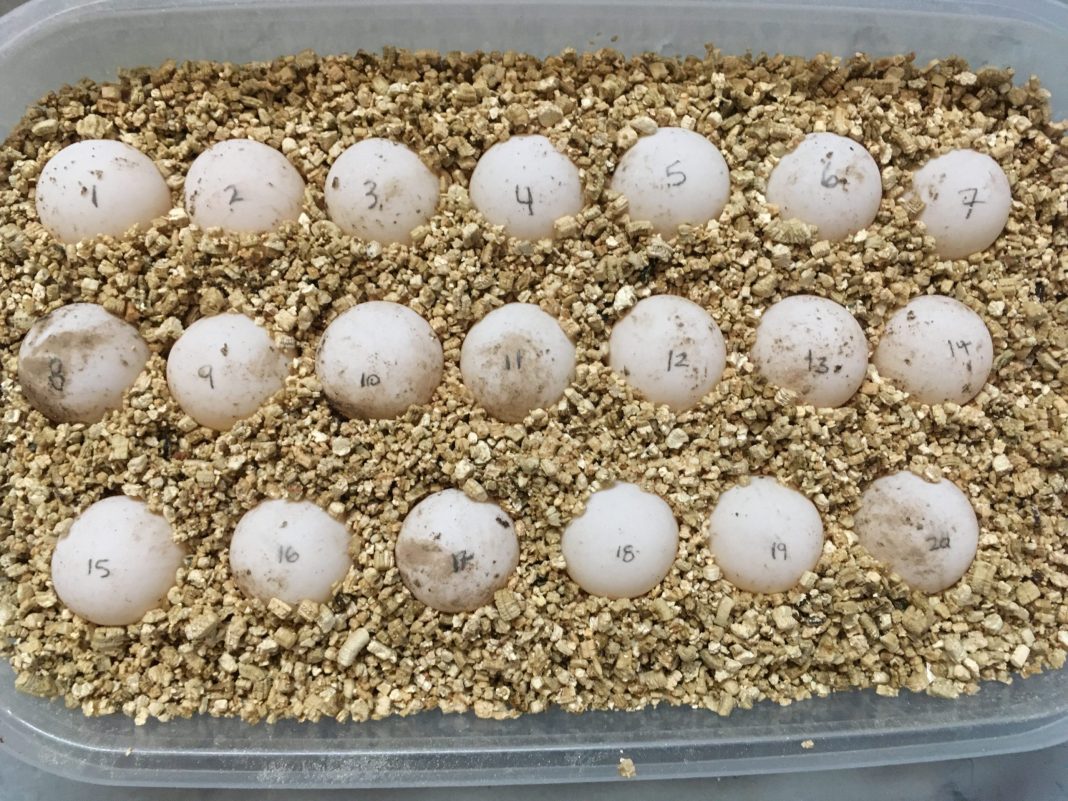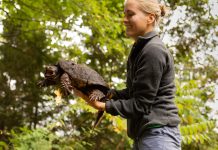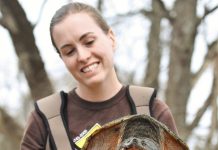By: Amanda McKelvey
After some Covid-19 related uncertainty, I was lucky to start my Canadian Conservation Corps experience with the Huron Stewardship Council in the last week of May. Late spring/early summer is a very active time for a lot of wildlife, and it was a great time to start working with the HSC. Our start date also happened to line up perfectly with turtle nesting season!
Huron County is home to a variety of wildlife including snapping turtles and painted turtles. These turtles tend to nest in the early summer as overnight temperatures rise, and are especially partial to nesting after rainfall when the ground is moist. This year those factors lined up in very early June. Once the turtles have started nesting, the new challenge is to find them. The HSC has artificial nest sites set up in some areas popular with turtles to try and stop them from nesting in high risk settings like roadways. One of our first assignments as interns was to monitor these nest sites.
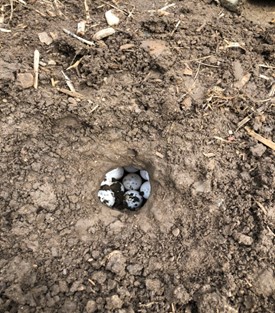
Aside from monitoring artificial nest sites, nests were located by community members and partner organizations reporting nests to the HSC. If a nest was somewhere relatively out of harm’s way, we would cage the nest using a specially constructed nest cage. Unfortunately, turtle nests are heavily predated, so adding a cage over the nest helps protect the eggs from predators such as foxes and raccoons. If a turtle nested in a high risk area, for example close to the road or in an active field, we carefully collected the eggs to give the nest a better chance of survival. Those eggs that we did collect were transferred into incubators to monitor until they hatched.
The incubators allow for temperature and moisture control, mimicking the environment the eggs would have been in underground. We checked the eggs regularly to ensure they were developing properly, adding water when needed. It was an amazing experience to see the eggs develop from when we first collected them, to being able to see little baby turtles inside the egg through candling (where light is shone through the egg and the shadow of the turtle growing inside can be seen).
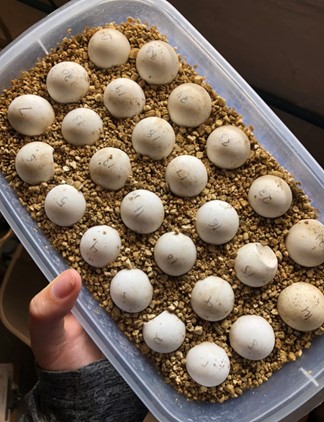
As the end of my time with the HSC came nearer I was anxiously waiting to see some of the turtles hatch before I left. Thankfully, they did! The baby turtles are of course incredibly cute, and surprisingly fast! It was an unexpected challenge to check and make sure the hatchlings looked healthy while they were running around their containers. Once they are hatched the turtles are moved from the incubator into an artificial habitat until they are fully developed and ready to take on the world. When ready, the turtles are released back into the areas they were found. Sadly, I’ll miss the turtle releases this year as I move to the next stage of my CCC program, but I wish all the little hatchlings the best!

